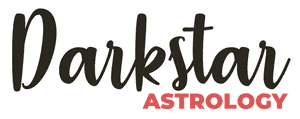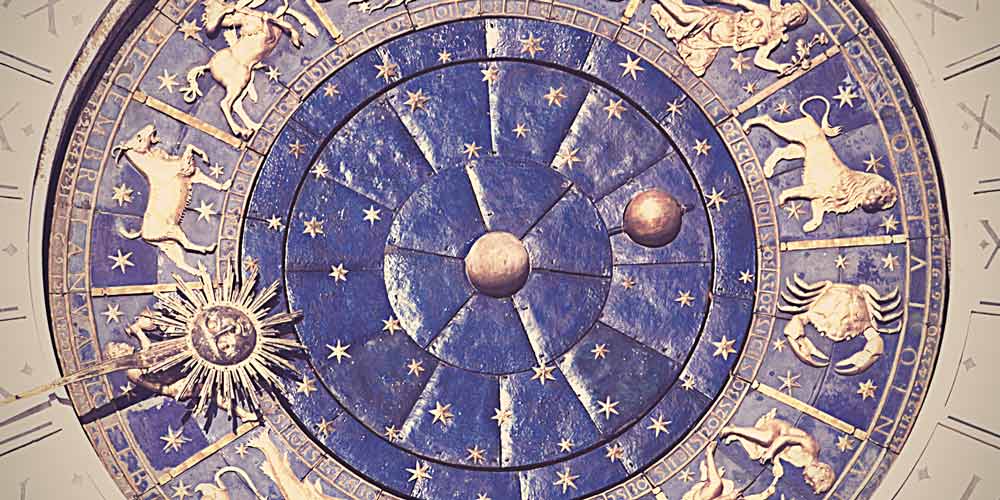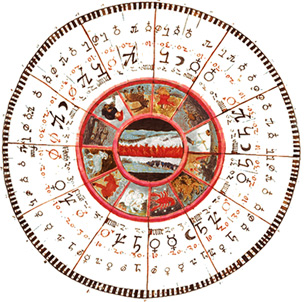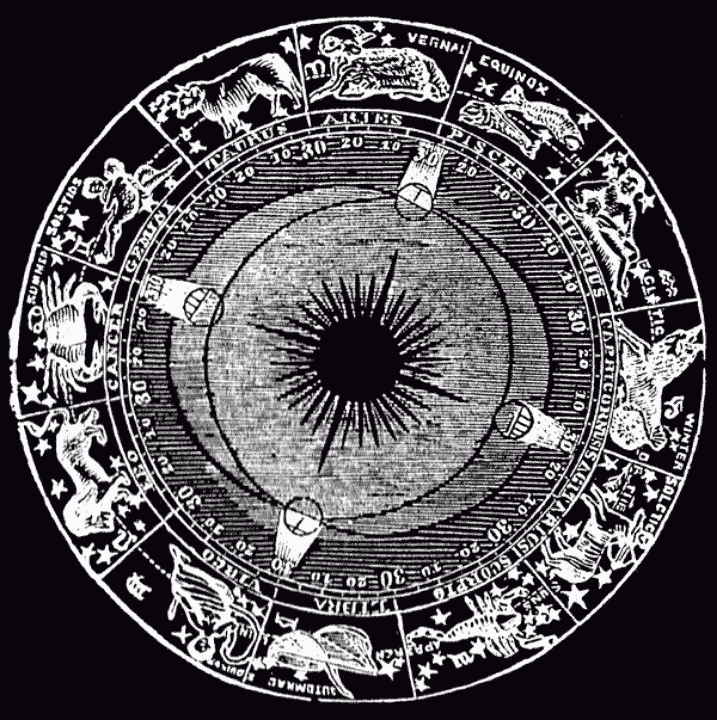There are two methods of using the fixed stars and their constellations for astrological purposes nowadays. 1) The fixed stars longitude method on the ecliptic or 2) The visual astrology of parans. The ecliptic is the path the Sun takes to travel around the earth, and it comprises the 360 degrees of the zodiac.
The use of fixed stars in astrology goes back thousands of years, but since many of the important books were probably burnt in the fire of the great library in Alexandria, we may never really know precisely how the fixed stars were used astrologically as opposed to astronomically.
Hipparchus devised the first known catalogue of fixed stars in 129 BC when he projected 850 stars onto the ecliptic. Ptolemy the famed astrologer, astronomer and mathematician from Alexandria expanded this earlier work. At the end of 149 AD, Ptolemy had listed 1022 stars by longitude and latitude.
This time Ptolemy took precession into account so this star list could be used by future generations. This was a complete innovation. It was published in his influential astronomical work Almagest. This way of working with the fixed stars caught on in a big way, since it was beautifully simple. It completely wiped out the complex use of parans, which were thought to have been used previously.
Parans V Longitude
Ptolemy’s tables were in use for an incredible 1000 years, but fixed star astrology fell out of favour during the uprise of Christianity. Ptolemy’s work was rediscovered in the Arab world, however. Astronomer Ulugh Beg (1394-1449) produced star maps that were based on the poles of the celestial equator rather than the ecliptic.
Beg’s positions differ from Ptolemy’s by about 1 degree due to advanced instruments and a better understanding of physics. To get a better understanding of the differences between the two systems there is a great debate here on Skyscript’s forum that explains the history and science of the longitude system of using fixed stars.
Bernadette Brady advocates the use of parans with fixed stars and refers to Anonymous of 379 CE’s “Treatise On Bright Fixed Stars” in which it is stated that only fixed stars close to the ecliptic should be used in the manner of Ptolemy and that the only true way to use those above the ecliptic is by using parans. I suspect this recommendation is due to inaccuracies of measuring fixed stars off the ecliptic almost 2000 years ago. Science has moved on quite a bit since then!
Brady also says we shouldn’t confuse Ptolemy’s Astronomy (Almagest) with his Astrology (Tetrabiblios). I don’t know if Ptolemy used parans as I can find no reference for it, neither can I find any current book on fixed stars that uses them. Since 1930, fixed star astrologers, Vivian Robson, Elsbeth Ebertin, Eric Morse and the late Diana K Rosenberg all use the longitude method for their interpretations.
I personally prefer the longtitude method because it is universal in terms of location. For example, if I used parans to read an eclipse, I would have to do a chart for every single city on earth! I also prefer the ecliptic method for natals since with parans everyone born on the same day in the same city, gets the same rising and midheaven star.
These days generally, in the US at least, birth times are recorded which again makes me think parans would’ve been more useful in times when birth times were not. I would like to share with you how I use the fixed stars in my own practice. It is so easy to get swamped by them, so I have arranged a tiered system. In this way we open up the mythology all the constellations, near and far. You can look up a stars latitude on constellation of words .
Constellations & Latitude
NEIGHBOURS: Fixed stars close to the ecliptic are generally those from the constellations of the zodiac. Like the star Regulus for Leo, Aldebaran for Taurus, Antares for Scorpio and so on. We can give these a 2º.30 -3º orb if they are of the 1st or 2nd magnitude because their effects are strong in that their messages speak to us loud and clear.
We don’t need translation and we are familiar with their archetypes through the popular use of star sign astrology. Stars on the ecliptic are like they are standing in the same room with you, both on the same level. You can hear each other clearly and are speaking the same solar language. The language is down to earth, personality based and focuses on humanities struggle with its own ego.
FOREIGNERS: Then we have some constellations that sit close by the ecliptic, but who are not so familiar to us like Ophiuchius, Orion, Corvus and Canis Minor. We can also feel their effects strongly, they might even speak the same language, but then we have to listen more carefully due to foreign accents! Examples Sirius, Fomalhaut, Capella, Alcyone, Ras Alhague, Rigel, Algorab, Algol.
These stars are more complex and we are starting to look at different cultures and ideologies. Just like Neptune, some of these energies can manifest negatively in an un-evolved being, the dangers of addictions and criminal tendencies are strong here especially with Algol and Algorab. These stars I use between 1º 30 -2º orb depending on their magnitude.
ALIENS: After that things get more mysterious and otherworldly. We need a radio to tune into their messages. With these far off stars are at higher latitudes so the orb has to be very tight, just like tuning into an fm station. The general rule for me is, the further off the ecliptic, the tighter the orb needed. But there is also another consideration; What is the consciousness level of the subject with this star? Can they even understand and utilize the energy that is being transmitted down to them?
Difficult stars higher up like Phecda (+47 latitude) could manifest to some ears as garble and noise. The stars could literally drive you mad. This is probably how Phecda’s lower manifestations, like bloodlust and sexual obsession, end up being becoming one of its characteristics. I would give a very, very tight orb to Phecda! Maybe only 15’. Examples of other stars in this category: Phact, Canopus, Toliman, Vega, Polaris, Deneb Adige. Again bare in mind the magnitude. I’d give between 30’ and 55′ (Under a degree) for these.
36 Decans
I think it is important to join the mythology of the zodiac back up to the sky from where it came. Precession has ripped the constellations off their original bearings. Tropical astrologers now use a system that bears no relation the actual sky co-ordinates. UPDATE: I have now finished my decans book. Here is the article on how to use them and their history. The Zodiac Decans
In modern times astrologers have no need to refer to the sky at all to practice their craft. Very few astrologers nowadays have telescopes, astrology software does the job far better of course, but our connection to the cosmos may have suffered as a consequence.
Ancient cultures had Henges (Such as Stonehenge) which gave a profound connection to the stars and planets through these stone observatories. Rituals of space and time make us self-aware, observers of ourselves and our actions, it makes us accountable. Astrology is religion in the truest sense, it re-links us with everything.
Religare in latin means “to connect”. Religion can also be the tie that binds and constricts, so we must remember the planets incline they do no not compel, we have free will to use the stellar energy to it’s highest or lowest potential. I have started to examine the stars and constellations as they fall into the decans of the zodiac signs.
This has proved very illuminating as I have found there is indeed a connection between the meaning of the fixed stars and the tropical zodiac signs in which they fall. The late Dane Rudhyar actually said that precession should be taken into account when reading the starsign. I do think it is significant when a fixed star changes signs. It’s all synchronistic and symbolic.
Art & Science
The zodiac signs, the constellations and the fixed stars are all part of an evolving universe, nothing is absolute as new memes come into existence. So like we have Venus in Aries, so too we can have tropical Taurus moving through sidereal Aries, tropical Pisces in sidereal Aquarius and so on…
However as we have seen it’s not that simple, there are far more constellations effecting each sign than just one, but Dane has made the connection which I respect. Diana Rosenberg took into account the tropical meaning of the signs in her interpretation of her star sets. I like the thought of re-uniting sidereal with tropical in some way, bringing some astronomy back to astrology. If grouping the fixed stars into decans can do that in some small way then I am happy.
Ptolemy is listed as being an astronomer, astrologer and a mathematician, as if those things were separate. Back in those days they were not. Ancient wisdom has been hacked into separate subjects and the connectivity and magic removed. Take a look at the beautifully illustrated “Book of Fixed Stars” by Ulagh Beg. It is a work of art, not a science manual.
Look at Albrecht Durer, this artist and mathematician produced the first printed maps of the constellations in 1515. I think we are coming full circle now though and I’m hoping astronomy and astrology will start to merge once more. Music is maths and colour has vibration. It’s all linked. Astrology has correspondences in our bodies, in colour, in the chakras and even in musical notes. We are indeed made of stars.



